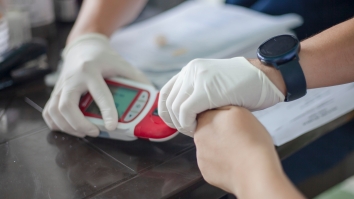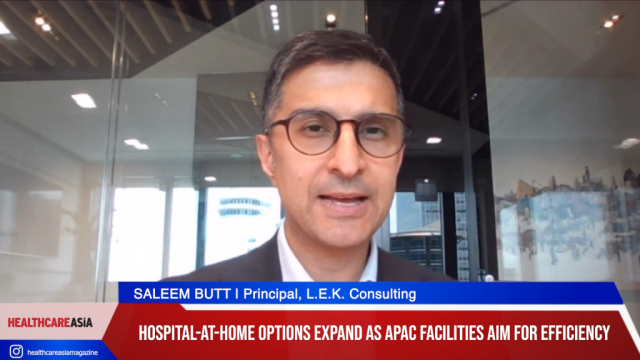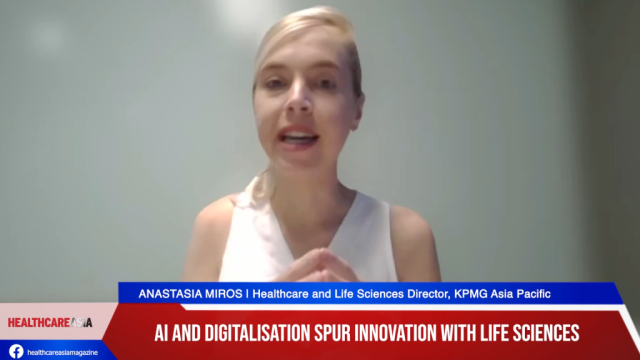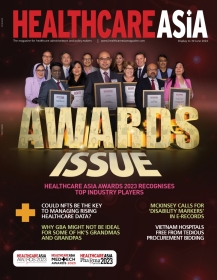
Singapore is turning to artificial intelligence for elderly care
Robotics, artificial intelligence, and chatbots are being used by nursing homes and care facilities so families and caregivers can engage remotely with patients.
Demand for quality private healthcare and private healthcare expenditure are expected to continue rising due to various structural factors: ageing population, higher prevalence of chronic diseases, rising affluence, and other factors including population growth and healthcare inflation.
Private health expenditure per capita grew 3-14% YoY in the past five years, with growth in 2015 at 3%. According to John Cheong, analyst with Maybank Kim Eng, the government has boosted spending significantly to cater to the rising demand. On the other hand, private health expenditure continued to increase. Raffles Medical is the main beneficiary of these positive trends given its leading position in Singapore and integrated business model.
Singapore’s aged population has increased at a faster pace than the rest. Singapore Population White Paper estimated that by 2030, the number of citizens aged 65 and above will double to 900,000 and they will make up one in four of total citizens, from one in eight in 2015. Moreover, those aged above 65 have at least 19% chance of being admitted, whilst those below 60 have less than 11% chance of being admitted.
Silver society
In addition to the ageing society, prevalence of chronic diseases such as cancer, heart attack, and obesity has increased over the years. The reasons for the increase were longer lifespan and lifestyle changes including diet and exercise habits. This could lead to increase in demand for more complex specialist treatments such as oncology and cardiac treatment.
Speaking at the Healthcare Asia Forum held in 27 April at the Westin Singapore, Dr Tan Jit Seng, director, Lotus Eldercare Health Services, said for an effective “ageing in place,” a NEEDS model which should either be preventive or supportive must be in place for an effective “ageing in place.” “For it to be preventive, there must be teleremote vitals monitoring, telepresence for isolation and loneliness, and verbal controls of appliances like lighting, TV, and aircon, among other things. On the ‘supportive’ aspect, there must be quick access to information for problem solving, teleconsultation, and day to day assessment and monitoring for deterioration and identifying reversible issues.
What are the benefits of technology use in elder care? It reduces the reliance of trained healthcare manpower by empowering the patients and their family on the care supported by timely input of information to patients and their families or continual monitoring of chronic disease and early warning of flares or decompensation,” he said.
Reducing personal and government spending on healthcare by improving compliance in leading a healthier lifestyle with input of vital data and treating diseases or deterioration earlier including delaying onset of dementia by five years would both decrease the number of cases by a third and alleviate economic costs by 36%, or over £21b, by 2050. Dr Tan was joined by Dr Timothy Low, CEO of Farrer Park Hospital, in the forum as a speaker.
Robots for elderly care
Dr Tan shared that some elderly care facilities use Ohmni — robots used to augment aged care. Families/Caregivers can engage remotely over the Internet and cook, eat, and walk together to mimic physical presence. They can check on the elders’ safety for peace of mind and make sure they follow their diet or medication. Geriatric specialists, nurses, and doctors can dial-in on-demand simultaneously to provide services.
Another robot being used in the elderly care industry is ExoAtlet which uses robotics for exoskeletal support. Its advantages include fall prevention, doing away with stigma as opposed to using a wheelchair, clients are better able to manoeuvre in any terrain, and there is more possibility of quicker rehab especially for frail elderly clients post-hospitalisation. Another illustration for robotics use is Loomo. Its main uses include telepresence, infotainment, daily routine support, and cognition/mood/routine monitoring.
With robotics and artificial intelligence, individual clinics, hospital departments, nursing home, and care facilities, among others, can seamlessly list their services and other important information in their chatbot avatars. Each chatbot can later be used for integration of personalised companion robots and be given protocols to enhance the lifestyle of the individual whilst seamlessly monitoring their health status.
Chatbots for health advisory are already available to those savvy in chatbots, but in the future, the healthcare industry will be empowered to use these tools as the next form of automation and communication.
Singapore’s sheen
On medical tourism, the country is showing signs of recovery after a flattish year in 2016, as most overseas patients are still adjusting from the strong SGD and softer economy. Maybank’s Cheong said in a report that IHH, the largest hospital group with four hospitals in Singapore, saw a 12% increase in Indonesian patients. Also, visitor arrivals in Singapore resumed growth in 2016, after the unexciting 2015 and 2016. In addition, most currencies have stabilised against the SGD except for the MYR.
The spending in the public sector is expected to continue to grow to ensure affordable healthcare services for ageing citizens and ease congestions in the public hospitals. “Easier and more convenient access to affordable public healthcare facilities could impact demand for private healthcare. The government targets to increase healthcare spending by 10%, according to its 2017 budget. Despite the improvement in the public healthcare system, the structural trend of rising affluence could continue to improve demand for better quality private healthcare. Also, we note that the market share of public hospitals has been stable, at around the 85% level since 2010 and both public and private hospitals grew at a historical six-year CAGR of around 3%,” Cheong explained.
Thai Wei Ying, analyst with UOB KayHian, also noted that whilst Singapore still remains a compelling medical tourist destination in terms of service quality and clinical outcomes, we believe foreign patient growth may decelerate gradually as competitive pressures from neighbouring ASEAN countries grow. “For instance, IHH has seen a shift in patient mix over the past years. In 2013, local-foreign patient mix stood at 60:40 but has since shifted to 70:30. Separately, we observed RMG has seen a slowdown in medical tourism in the past years, with the group estimated to record a low single-digit drop (in %) in foreign patient inflow in its latest 1Q17 results. Going forward, we expect patient growth to stem largely from local patients, underpinned by favourable demographic trends such as ageing demographics as well as rising income levels,” he said.
Moreover, he expects spillover effects from public hospitals, taking into consideration that bed occupancy rate in public hospitals still remained very elevated (82-97% based on latest data versus 60-70% at private hospitals), even exceeding the standard levels (82-85%) by Australian Medical Association and Australasian College of Emergency Medicine. Given that the number of lower margin local patient growth is expected to outpace that of higher-margin international patients, he expects revenue intensity growth to soften in Singapore.























 Advertise
Advertise







